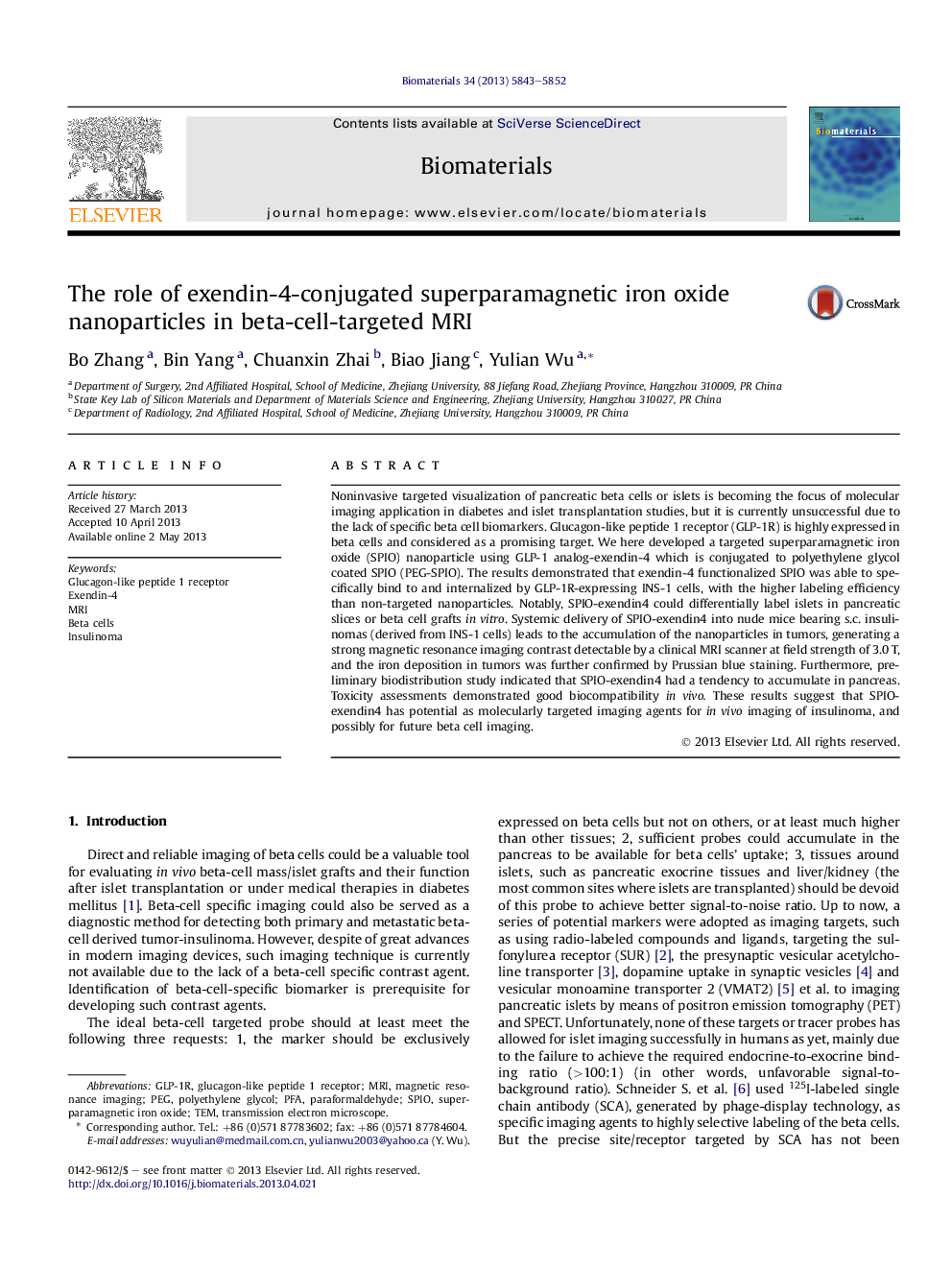| Article ID | Journal | Published Year | Pages | File Type |
|---|---|---|---|---|
| 6320 | Biomaterials | 2013 | 10 Pages |
Noninvasive targeted visualization of pancreatic beta cells or islets is becoming the focus of molecular imaging application in diabetes and islet transplantation studies, but it is currently unsuccessful due to the lack of specific beta cell biomarkers. Glucagon-like peptide 1 receptor (GLP-1R) is highly expressed in beta cells and considered as a promising target. We here developed a targeted superparamagnetic iron oxide (SPIO) nanoparticle using GLP-1 analog-exendin-4 which is conjugated to polyethylene glycol coated SPIO (PEG-SPIO). The results demonstrated that exendin-4 functionalized SPIO was able to specifically bind to and internalized by GLP-1R-expressing INS-1 cells, with the higher labeling efficiency than non-targeted nanoparticles. Notably, SPIO-exendin4 could differentially label islets in pancreatic slices or beta cell grafts in vitro. Systemic delivery of SPIO-exendin4 into nude mice bearing s.c. insulinomas (derived from INS-1 cells) leads to the accumulation of the nanoparticles in tumors, generating a strong magnetic resonance imaging contrast detectable by a clinical MRI scanner at field strength of 3.0 T, and the iron deposition in tumors was further confirmed by Prussian blue staining. Furthermore, preliminary biodistribution study indicated that SPIO-exendin4 had a tendency to accumulate in pancreas. Toxicity assessments demonstrated good biocompatibility in vivo. These results suggest that SPIO-exendin4 has potential as molecularly targeted imaging agents for in vivo imaging of insulinoma, and possibly for future beta cell imaging.
